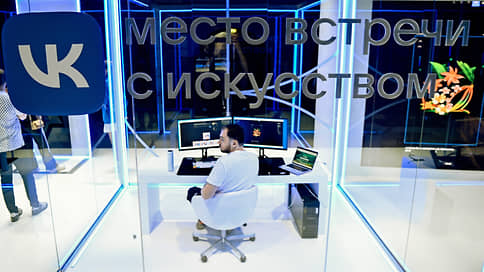In VK there will be an application for car customization
[ad_1]

An application for tuning a car will appear in VK – we are talking not only about the designer, but also about the opportunity to implement the project in the declared studio. Experts estimate the cost of developing such an interface at up to 15 million rubles. The interest of car owners in customizing cars, according to research, remains. In the car market, they indicate that during a crisis, the customization market stagnates due to the cessation of deliveries of cars and components, and demand is concentrated in the styling segments or the creation of body kits like those offered by the automakers themselves.
According to Kommersant, in June VK will launch the Car Customizer application for collecting custom car designs. According to Kommersant’s interlocutors, the functionality involves the ability to create a tuning for a car, and then make it at the price announced there in one of the announced tuning studios – five offers will be available at the start. Kommersant sent a request to VK.
In addition to the car configurator, according to Kommersant, the mini-application includes personal accounts for each of the tuning salons, as well as a “battle” function, in which users can make a project for one car and compete with projects.
The cost of developing simple VK mini-applications starts from 300-500 thousand rubles, the same prices apply if the functionality of an existing service is adapted to VK, says Evgeny Borovkov, commercial director of the Art of Automation company. “If the mini-application provides for more complex mechanics, then the costs automatically increase to 1 million rubles. and above,” he said. Evgeny Borovkov estimated the cost of developing the service at 1.5-3 million rubles. in a simplified form and 5–12 million rubles in an advanced one.
According to Otkritie Avto in May, about half of car owners are ready to spend up to 100 thousand rubles on tuning. According to the study, another 12% are willing to spend from 100-500 thousand rubles, from 500 thousand to 1 million rubles – 2%, more than 1 million rubles – 1%. At the same time, a third of car owners (34%) are not ready for this at all. Among Muscovites, spending on tuning up to 100 thousand rubles. 39% are ready, from 100 thousand to 500 thousand rubles – 22%, from 500 thousand to 1 million rubles – 5%, over 1 million rubles – 2%.
Among the reasons for interest in custom design, the desire to make the car unique is in the lead – this option was chosen by 55% of respondents.
Every fourth (24%) car owner at the same time noted that the alteration of the car worsens its operational properties, according to Auto Discovery. Among the main elements of the car, the alteration of which is allowed by the owners, most often they named the interior (64%), glass and body wrapping (38%), lighting tuning (23%), non-standard rims (18%), engine chip tuning (16 %) and improvement of aerodynamic elements (15%).
Anton Shaparin, vice-president of the National Automobile Union, notes that before the crisis began, the segment for installing non-standard components was actively developing in the Russian Federation, but now it is stagnating. Some of the major Russian players who made body kits for cars and supplied them through official car dealers, after the cessation of the supply of new cars, reoriented to other markets, he continues. Only the luxury segment remains (because these cars still arrive on order, but the number of customers has fallen here) and those who make replicas of regular body kits, such as BMW M Performance, using Chinese components, Mr. Shaparin explains.
According to the expert, in general, “clean look” cars, copies of what automakers were selling, as well as understating and styling, pasting in premium colors, are now more popular in the Russian Federation. “You need to draw a clear line that there is a conversion that needs to be coordinated, and styling, where there are no restrictions, but it has become more difficult with quality components,” he concludes.
[ad_2]
Source link





